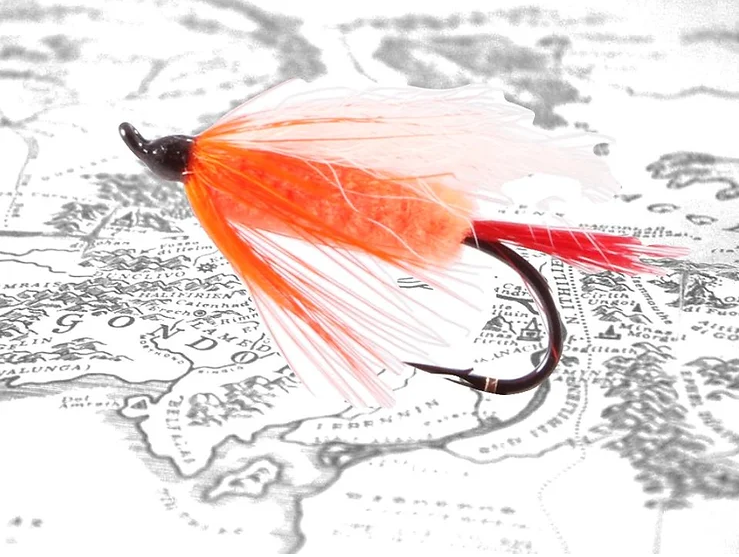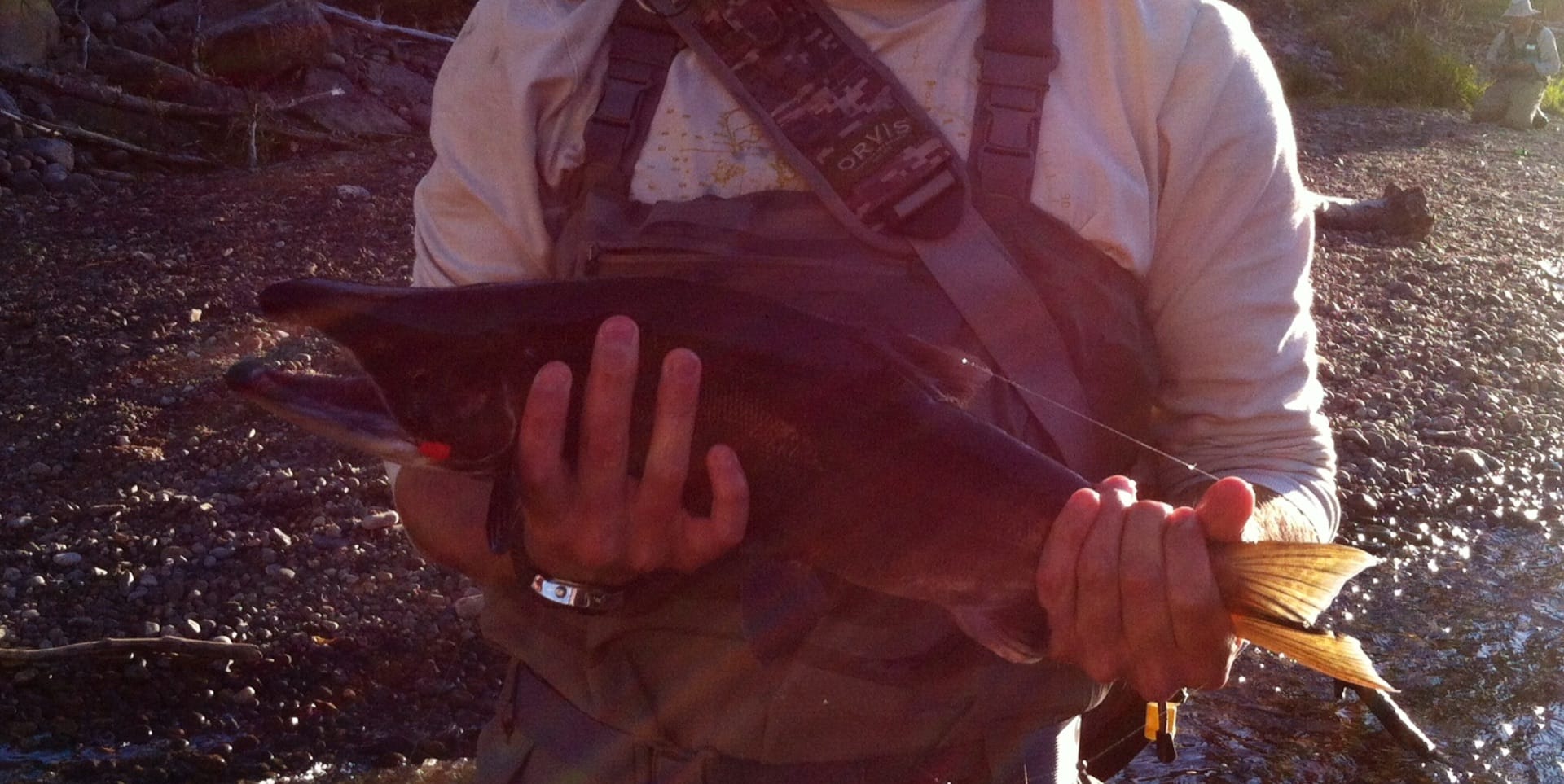Weird Flies That Work: Polar Shrimp
Fly fishing: An unexpected pattern to be treasured by a Rocky Mountain trout angler

June 2022
How many distinct fly patterns do you think exist today? When I was fresh to fly fishing, I used to put a little index card to reference the fly names matching the random assortment of hooks I carried in my fly box. I was so overwhelmed with fishing reports spouting out fly names that I’d never heard of, this was the best solution I could think of to keep my mind organized. Soon, I sort of got the hang of the basics, and even figured out how to organize my nymphs vs dry flies, but there were other flies that I couldn't get a handle on as they seemed outside of the fly 'norm' for this area.
The polar shrimp fly pattern was one of those flies — a steelhead and salmon pattern, bright orange with a calf-tail wing, this fly looked nothing like my others. It was blinding, large, had a weird hook and didn’t look like any bug or baitfish I’d ever seen. My introduction to the polar shrimp came by way of my first-ever fishing trip. An event organized by a local shop, we were set forth with a cup of bright, flashy flies and pointed in the direction of a Colorado Kokanee spawning run. Upon first review of the curated dozen flies I received, I fully believed that the shop was just trying to squeeze us newbies out of a few extra bucks. None of the flies made sense, at least compared to the flies I was carrying around in my trout box. Oversized nuclear eggs, massive copper johns, polar shrimp, and only one fly I recognized, the San Juan worm. And after all was said and done on that first trip, the only fly from that selection that worked was the San Juan worm, which is not exactly a secret pattern, even for a novice angler.
Even after that trip, I was not a man to throw away any fly, so I studiously tucked the remaining oddballs into a corner of a box. I kept them secret, and kept them safe. Through various reorganizations, new box layouts, and plenty of lost flies, I left a space for at least one polar shrimp. That fly managed to stick around. A patient bench warmer, it remained, waiting for that chance to prove itself. And when that chance finally came, I didn’t even want to give it a shot. I poured over every other available option in my box, while my fishing partner tagged fish after fish on the polar shrimp. How did we end up in such a messy situation where a polar shrimp became the favored fly for a trout river? On this river outing, runoff had thrown us a curveball. We were expecting better visibility but nature didn’t play nice. Plus, we had made quite a journey to reach the river, and weren’t about to turn around without throwing a few Hail Marys. The only fly that consistently worked that day was our unassuming, ridiculous polar shrimp. It wasn’t just a one-off fish either; pretty much any fly can do that. This fly has proven to be a consistent performer that all but ensured a permanent residence somewhere in a box I carry. However, just because it’s in there doesn’t mean I’ll think to use it. The doubt of this fly sank deep, dating back to my original hesitancy.

Then I caught my first salmon on the swing, with a polar shrimp at the end of my line. Again in a situation where nothing else seemed to work, the return of a king. The message was fully received. (This fly even has a cult following in the steelhead and salmon world). I was late to a game I hardly played (swinging flies), but found my way into “the know” all thanks to a seemingly random assortment of flies from a local shop. So I over-corrected, hoarding the pattern, jamming one into every box for every outing, just in case. I was committed to finding an excuse to try it on local waters, predicting the miraculous discovery of my next “secret fly.” That went about as well as you’d expect (it didn’t go so well), and eventually my collection shrank back down. It may have even disappeared from my mind when my attention turned toward fishing tiny tailwater offerings to the trout in the South Platte and the Blue Rivers.
History became legend. Legend became myth. And who knows how many years passed before I got bailed out again by my polar shrimp. We inherited bruuutal fishing conditions, as an unexpected jump in flows on Oregon’s Rogue River was ordered to benefit the migrating Chinook. We shoved off anyway and blistered downstream in our drift boat, left unable to find a suitable anchoring hole for about half our float. With the opportunity for steelhead feeling all but lost, I threw the kitchen sink at them: large salmonfly dries, large stonefly nymphs, glo bugs, even scaled-down flies to cover my bases to try to get any kind of bite, even from the resident trout; but we couldn’t unlock the day’s secrets. We felt doomed.

Then something happened that the river had not intended. I stumbled upon a polar shrimp packed away in my travel fishing gear. Included only to fill out a box with some extra room, it came to me; my own; my love; my precious. I dropped it under a small stonefly, as the bottom fly of a nymphing rig, and started gaining some heat. Unconventional sure, but that didn’t matter anymore. Long lifeless drifts turned into nibbles, which finally turned into fish under my bent rod. Not steelhead, but resident rainbows!
The polar shrimp is not a miracle fly, it couldn’t save us from those tough conditions, but drastic times require drastic measures and the nerve to call a Hail Mary. To me, that’s what this fly has become all about. One weird fly to rule them all… when I simply can’t get anything else going.



